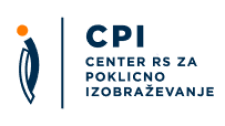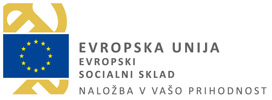Archived
Izdelovalec/izdelovalka kovinskih konstrukcij
Selected qualifications
| Name of qualification | Name of qualification: Izdelovalec/izdelovalka kovinskih konstrukcijAdd to comparison |
|---|---|
| Translated title (no legal status) | Translated title: Metal Construction Maker |
| Type of qualification | Type of qualification: Upper secondary vocational education |
| Category of qualification | Category of qualification: Educational Qualification |
| Type of education | Type of education: Upper secondary vocational education |
| Duration |
Duration of education:
3 years
|
| Credits | Credits: 180 credits |
| Admission requirements |
Entry conditions:
|
| ISCED field |
Field:
Engineering, manufacturing and construction
|
| ISCED subfield | subfield: mechanics and metal trades |
| Qualification level |
SQF Level:
SQF 4 |
Certificate holders will be able to:
- use technologies and technological procedures to make structures and the metal elements of structures;
- manufacture various steel-structure products and correctly and safely install components and intermediate products;
- transport parts of a structure, assemble, protect and maintain structures and components of structures;
- deal with structural loads and use testing methods;
- correctly select materials and procedures with regard to products requirements;
- carry out basic oxyacetylene welding, soldering and glueing procedures on metal and non-metal materials;
- select suitable welding torches and filler materials and set welding parameters;
- prepare weld seams and clean the welding surface with regard to the requirements of the welding process and carry out visual checks and measurements of the elements to be welded;
- carry out basic methods of cutting, mechanical working of materials and corrosion protection procedures;
- use technical and technological documentation, technical regulations and standards, technical drawings and manufacturers' instructions;
- select and implement a technological procedure for processing, forming or joining materials with regard to the type of material and the purpose of use;
- use the measuring and control devices, tools and machines that are used in the manufacture and assembly of structures;
- implement and provide for measures for occupational health and safety, environmental protection, fire safety and accident prevention;
- demonstrate a positive attitude towards measures to reduce pollution and improve protection of the environment;
- apply judgement on the rational use of energy, use of energy sources and waste management;
- work in a group and communicate in writing and orally with colleagues, experts and customers, using basic professional terminology;
- use modern IT and work with resources, data and materials;
- apply entrepreneurial thinking, manage costs and calculations, and conduct themselves responsibly and in a socially-oriented manner in the working environment;
(elective)
- select materials and use various devices for MIG/MAG and TIG welding processes;
- carry out MIG/MAG/TIG welding processes and make simple welded joints or products;
- use various machines for arc welding and select basic and filler materials;
- weld various joints and various materials in different positions;
- make judgements on the use of special welding processes;
- assess the environmental justification of the use of individual machines, devices and welding processes.
Certificate holders supplement their key vocational knowledge and abilities with key general knowledge in line with national standards.
Students' vocational abilities and skills, and the fulfilment of conditions to obtain credits in accordance with the relevant education programme are established through verification and assessment. Assessment of students also takes into account non-formally acquired knowledge, which must be adequately demonstrated. Students are assessed using grades from 5 (excellent) to 1 (inadequate).
Students may progress to a higher year if at the end of the academic year they achieve a positive score in all general education subjects and technical modules for the year as set out in the school’s operational curriculum, and have completed all extracurricular activities and practical on-the-job training, or progress on the basis of a programme faculty decision. For students with individual learning agreements, passing an intermediate test is a condition for progression from the second year to the third year.
Izdelovalec/izdelovalka kovinskih konstrukcij
SQF 4
EQF 4
The Career path tab shows the possible career path within the selected qualification area, which is not the only one and is not mandatory. The actual transition between qualifications, which is determined by law, is defined in the Transition tab.
SQF 5 / EQF 4
SQF 6 / EQF 5
Diplomirani inženir dizajn inženiringa (un)/diplomirana inženirka dizajn inženiringa (un)
Diplomirani inženir materialov (un)/diplomirana inženirka materialov (un)
Diplomirani inženir strojništva (un)/diplomirana inženirka strojništva (un)
Diplomirani inženir strojništva (un)/diplomirana inženirka strojništva (un)
Diplomirani inženir strojništva (vs)/diplomirana inženirka strojništva (vs)
Diplomirani inženir strojništva (vs)/diplomirana inženirka strojništva (vs)
Diplomirani inženir tehnolog (vs)/diplomirana inženirka tehnologinja (vs)
SQF 7 / EQF 6
SQF 10 / EQF 8
Secondary technical, vocational or vocational-technical education; master craftsman/foreman/shop manager examination (SQF level 5)
Students must successfully (i.e. with passing grades) complete all general education subjects, compulsory vocational modules and elective vocational modules and the open part of the curriculum. They must also complete all extracurricular activities, practical on-the-job training and pass a school-leaving examination.
The school-leaving examination comprises a written and oral examination in Slovene, a service and an oral presentation.
Vocational and technical secondary schools and adult education institutions.
URL
Awarding body URL:Upcoming event
International Conference: 10 years of Slovenian Qualifications Framework
International Conference: 10 years of Slovenian Qualifications Framework Brdo Congress Centre, Predoslje 39, 4000...
© Center RS za poklicno izobraževanje, 2018. All rights reserved
Sitemap General legal notice Cookie Policy Production: ENKI






